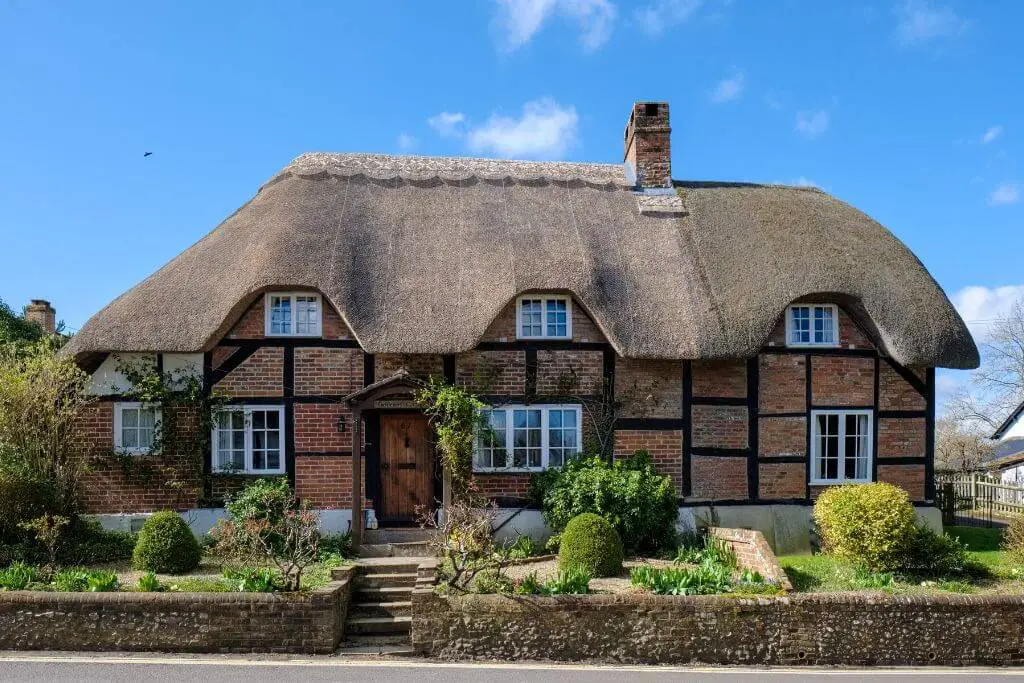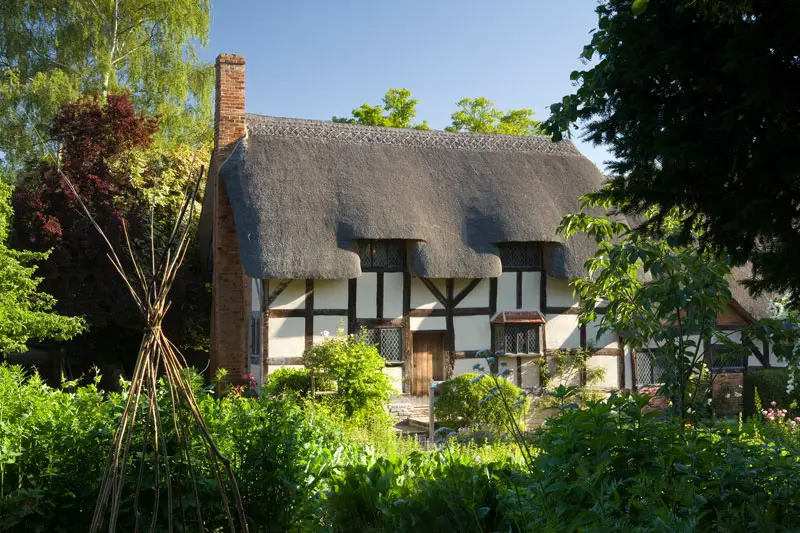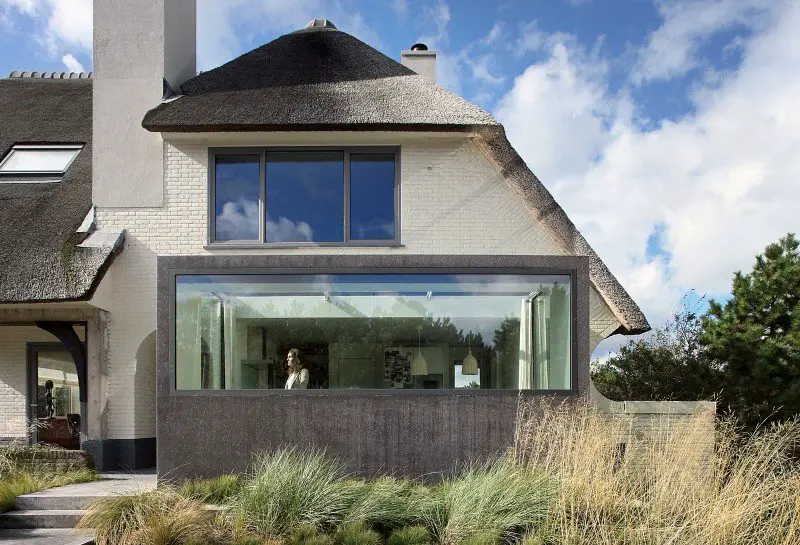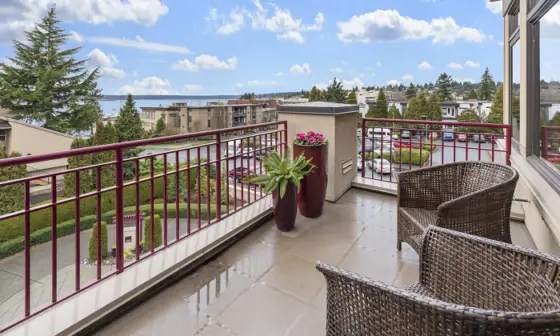
Thatched roofs are not just roofs; they are an art form, reflecting the craftsmanship and ingenuity of the people who created them.
The practice of thatching dates back to ancient times when humans first sought shelter from the elements.
Primitive societies used readily available materials, such as straw, reeds, and grasses, to construct shelter, and thatching was born.
A Sustainable Roofing Choice
One of the most remarkable aspects of thatched roofs is their sustainability. The materials used in thatching are renewable, and the production process has a minimal impact on the environment.
Additionally, thatched roofs have excellent insulation properties, keeping homes warm in winter and cool in summer, thus reducing energy consumption.
The Art of Thatching
Thatching is a highly skilled and specialized craft that requires precision and expertise. Thatchers meticulously layer natural materials, creating a water-resistant and durable covering.
Different Types of Thatching Materials

Thatched roofs can be constructed using various materials, each with its own unique properties and regional availability.
Common thatching materials include straw, water reed, rush, heather, and even palm leaves in some tropical regions.
The Pros of Thatched Roofs
Thatched roofs offer several advantages that make them an attractive choice for homeowners seeking a traditional and environmentally friendly roofing option.
1. Aesthetic Appeal
Thatched roofs exude rustic charm and timeless elegance. Their unique appearance adds character to any building, whether it’s a quaint countryside cottage or a historical landmark.
2. Environmentally Friendly
As mentioned earlier, thatched roofs are an eco-friendly choice as they involve the use of sustainable and renewable materials.
3. Excellent Insulation
Thatched roofs provide superior insulation, keeping interiors comfortable year-round and potentially reducing heating and cooling costs.
4. Low Carbon Footprint
Due to their sustainable nature, thatched roofs have a significantly lower carbon footprint compared to conventional roofing materials.
5. Acoustic Properties
The dense thatch layer acts as a natural sound insulator, reducing noise from outside and creating a peaceful atmosphere indoors.
The Cons of Thatched Roofs
While thatched roofs have numerous benefits, they are not without drawbacks. It’s essential to consider these aspects before choosing this roofing option.
1. Fire Risk
Thatched roofs are more susceptible to fire than modern roofing materials. Proper fire safety measures must be in place to mitigate this risk.
2. Maintenance Intensive
Thatched roofs require regular maintenance to ensure their longevity. They need re-thatching every few years, which can be time-consuming and costly.
3. Limited Availability of Skilled Thatchers
Thatching is a specialized skill, and finding skilled thatchers may be challenging in some regions, potentially affecting maintenance and repair work.
4. Vermin and Insect Attraction
The thatch material can attract rodents and insects, which may cause issues if not addressed promptly.
The Thatching Process
The thatching process is a complex and meticulous endeavor that demands expertise and dedication.
Let’s explore the step-by-step process of constructing a thatched roof.
1. Choosing the Right Thatching Material
The first step in thatching involves selecting the appropriate material based on factors like climate, availability, and building design.
2. Preparation of Thatch Material
The thatcher prepares the thatching material by cleaning, sorting, and bundling it for use.
3. Installing the Thatch Support Structure
Before laying the thatch, a sturdy support structure is constructed using wooden laths or reed battens.
4. Layering the Thatch
The thatcher starts layering the thatch from the eaves upwards, securing it with wooden pegs or wire.
5. Combing and Trimming
Once the thatch is laid, the thatcher combs and trims it to the desired thickness and shape, ensuring a neat and uniform appearance.
6. Ridge Finishing
The process concludes with the thatcher adding a decorative ridge to the roof, enhancing its overall aesthetic.
how long does a thatched roof last?
thatched roof’s lifespan can vary depending on several factors, including the type of thatching material used, the climate in which it is located, and the quality of maintenance it receives.
On average, a well-maintained thatched roof can last anywhere from 20 to 60 years. However, it’s essential to note that this is a general estimate, and some thatched roofs have been known to endure for even longer periods when cared for meticulously.
how much does a thatched roof cost in the UK?
The cost of a thatched roof in the UK can vary widely depending on several factors, including the size of the roof, the type of thatching material used, the complexity of the roof design, and the location of the property.
Thatched roofs are considered a specialized and artisanal craft, and as such, the cost is generally higher compared to conventional roofing materials.
On average, the cost of installing a new thatched roof in the UK can range from £25,000 to £70,000 or more.
This price range covers the materials, labor, and additional expenses associated with the thatching process. Thatched roofs require skilled craftsmanship, which contributes to the higher cost.
Thatched Roof Maintenance
To ensure the longevity of a thatched roof, proper maintenance is crucial. Here are some essential tips for caring for your thatched roof.
1. Regular Inspections
Schedule periodic inspections to identify and address any issues early on, preventing more extensive damage.
2. Addressing Wear and Tear
Timely repairs and re-thatching of worn areas will prolong the lifespan of the roof.
3. Fire Safety Measures
Install fire-resistant barriers and ensure that fire safety equipment is readily available.
4. Pest Control
Take proactive measures to prevent vermin and insects from causing damage to the thatch.
Are thatched roofs suitable for modern homes?

Absolutely! Thatched roofs can be a delightful and fitting choice for modern homes in the UK.
While they are often associated with traditional and historical buildings, thatched roofs can complement various architectural styles, including contemporary designs, adding a touch of tradition and character to modern properties.
In recent years, there has been a growing interest in eco-friendly and sustainable building practices.
Thatched roofs align perfectly with these principles, making them an attractive option for environmentally conscious homeowners.
Is insurance more expensive for homes with thatched roofs?
Yes, insuring property with a thatched roof can be more expensive compared to homes with conventional roofing materials.
Thatched roofs are perceived to carry a higher risk of fire hazards, which can influence insurance premiums.
Thatching materials, such as straw and reeds, are combustible, and although thatched roofs are designed to be fire-resistant, there is still a greater risk of fire compared to roofs made of non-combustible materials like tiles or slate.
Insurance companies take into account the fire risk associated with thatched roofs when determining premiums.
Due to the potential for higher damage costs in the event of a fire, insurers often adjust their rates accordingly.
Additionally, the cost of rebuilding or repairing a thatched roof can be higher than with conventional roofs, which can also impact insurance costs.



